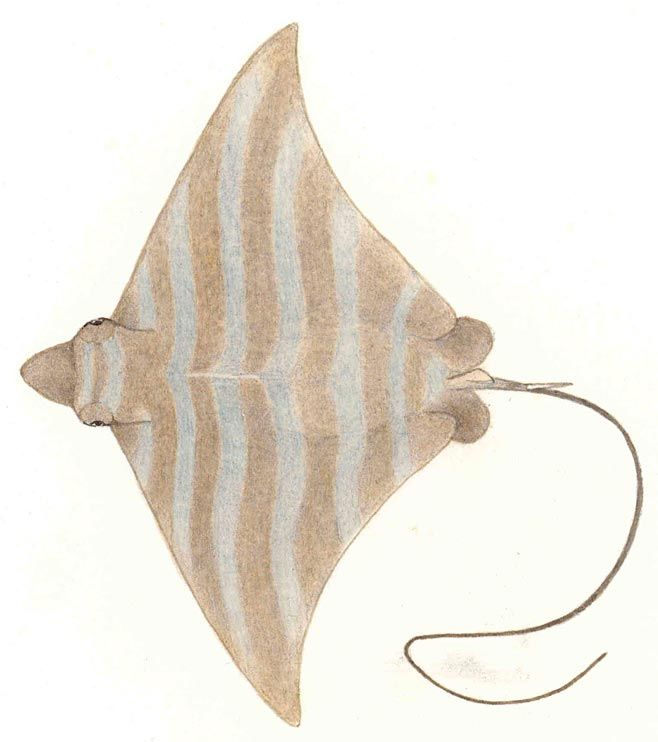|
Pteromylaeus bovina (Duckbill ray)
(Geoffroy St. Hilaire, 1817)
Life
> Eukaryotes >
Opisthokonta
> Metazoa (animals) >
Bilateria >
Deuterostomia > Chordata >
Craniata > Vertebrata (vertebrates) > Gnathostomata (jawed
vertebrates) > Chondrichthyes > Elasmobranchii > Batoidei >
Myliobatoidei > Myliobatidae
 |
|
Pteromylaeus bovina (Duckbill ray) [Illustration
by Ann Hecht ©] |
Identification
A thick-headed eagleray with several pale
blue-grey stripes across its light brown disk, a long rounded flat
snout like a duck's bill, sharply curved angular corners on pectoral
disk, and normally 7 rows of flat teeth. Stripes sometimes absent,
underside white.
Size
To 1.8 m DW.
Range
Southeastern coast, Saldanha Bay to Natal and southern Mozambique; elsewhere from
temperate and tropical Eastern Atlantic, Mediterranean Sea, and
possibly off Zanzibar in the western Indian Ocean.
Habitat
Inshore
waters down to 56 m in the Eastern Cape.
Biology
A powerful,
strong-swimming ray, sometimes in small groups, leaps into the air.
Feeds on bivalves, gastropods, crabs, hermit crabs, bony fish and
squid. Bears 3 to 7 young.
Human Impact
A prized angling fish,
generally released after capture; sometimes caught by offshore
trawlers.
Text by Leonard J.V. Compagno, David A. Ebert
and Malcolm J. Smale
|
